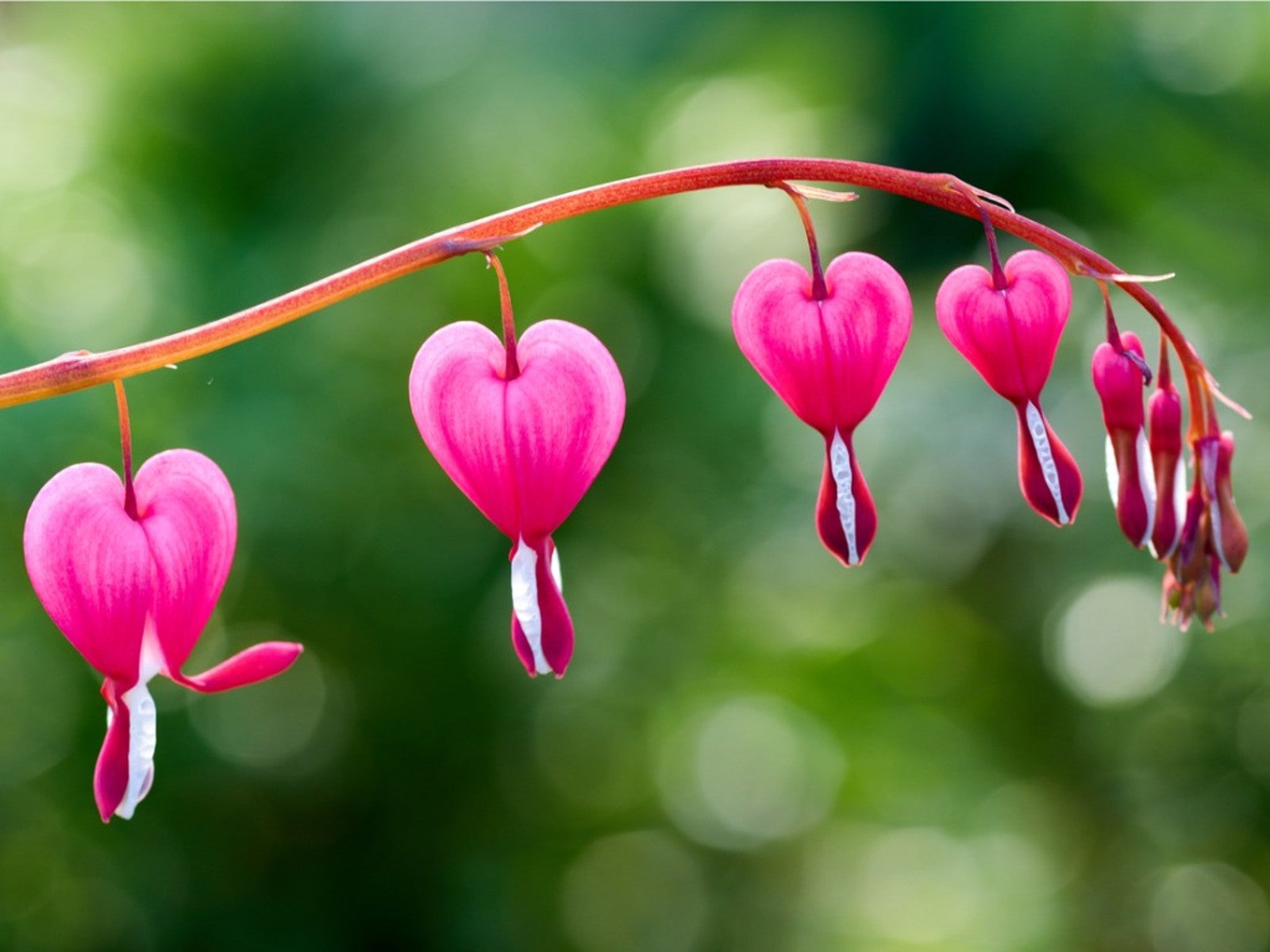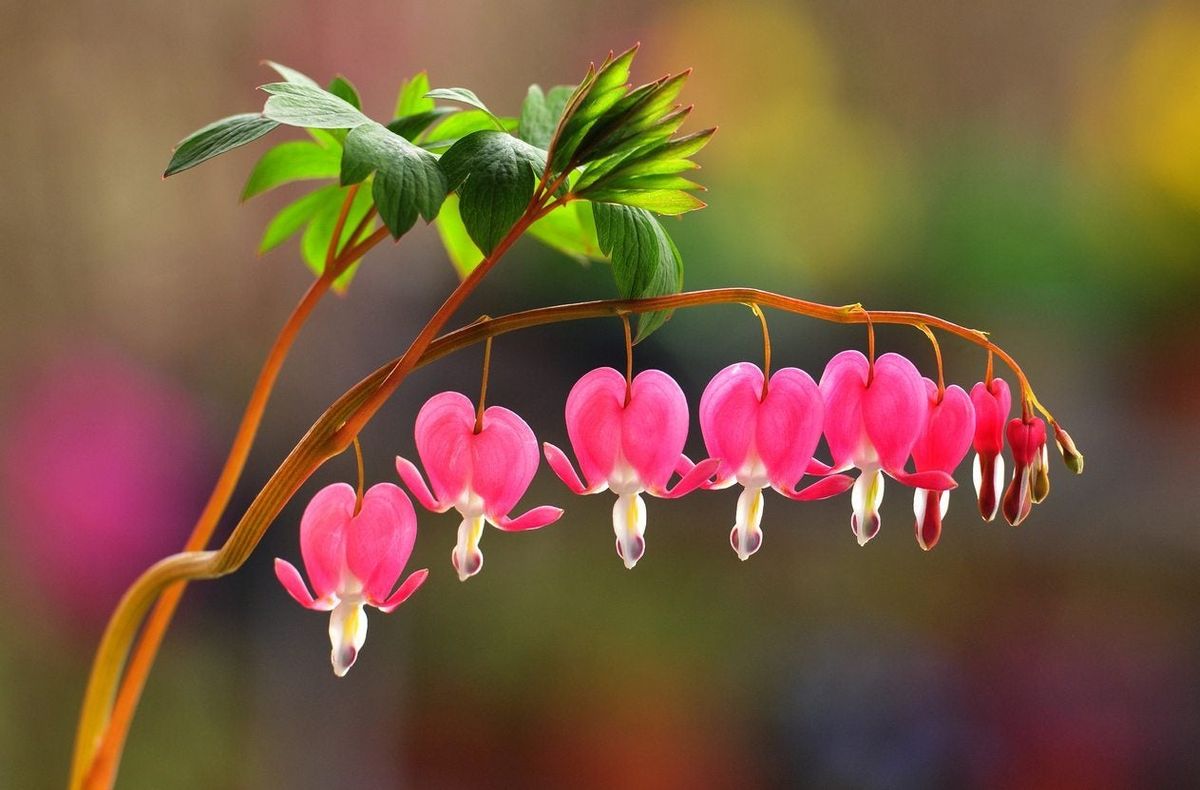The Enigmatic Bleeding Heart: A Study in Delicate Beauty
The Bleeding Heart, scientifically known as Lamprocapnos spectabilis (formerly Dicentra spectabilis), is a captivating perennial that has graced gardens with its unique, heart-shaped blossoms for centuries. Its common name, evocative of romance and fragility, perfectly captures the essence of its pendulous, pink-and-white flowers. This article delves into the various aspects of the Bleeding Heart, from its botanical origins and characteristics to its cultivation and cultural significance.
Botanical Origins and Characteristics
The Bleeding Heart is native to the mountainous regions of Siberia, northern China, Korea, and Japan. It belongs to the Papaveraceae family, which also includes poppies and other flowering plants. While traditionally classified within the Dicentra genus, recent phylogenetic studies have led to its reclassification into the monotypic genus Lamprocapnos.

Distinctive Features of the Bleeding Heart
Flowers: The most striking feature of the Bleeding Heart is undoubtedly its flowers. Each bloom consists of four petals: two outer, pink, heart-shaped petals and two inner, white petals that protrude like a “drop” from the bottom of the heart, resembling a teardrop or a drop of blood. These flowers dangle gracefully from arching, horizontal stems, creating a charming, cascading effect.
Varieties and Cultivars
Over the years, various cultivars of the Bleeding Heart have been developed, offering variations in flower color and foliage.
Common Cultivars
:max_bytes(150000):strip_icc()/bleeding-hearts-whimsical-dicentra-2132547-01-d35584abc43341cf8246d31fe5ac4352.jpg)
’Alba’: This cultivar boasts pure white flowers, offering a serene and elegant alternative to the traditional pink-and-white blooms.
Cultivation and Care
The Bleeding Heart thrives in cool, moist, and shady conditions. It is a classic woodland garden plant, well-suited to dappled sunlight beneath trees or in the shadow of buildings.
Optimal Growing Conditions
Soil: The Bleeding Heart prefers rich, well-drained soil that is consistently moist. Amend the soil with compost or other organic matter to improve its fertility and water-holding capacity.
Maintenance

Mulching: Apply a layer of mulch around the plants to help retain moisture, suppress weeds, and regulate soil temperature.
Pests and Diseases
The Bleeding Heart is generally resistant to pests and diseases. However, it can be susceptible to slugs and snails, especially in damp conditions. Root rot can also be a problem in poorly drained soil.
Companion Planting
The Bleeding Heart pairs beautifully with other shade-loving plants, creating a harmonious and visually appealing garden display.
Ideal Companions
Hostas: Their broad, textured leaves provide a striking contrast to the delicate foliage of the Bleeding Heart.
Cultural Significance and Symbolism
The Bleeding Heart has long been associated with love, romance, and heartbreak. Its unique flower shape and evocative name have made it a popular symbol in literature, art, and folklore.
Symbolism
Love and Romance: The heart-shaped flowers are a powerful symbol of love and affection.
Folklore and Legends
In some cultures, the Bleeding Heart is associated with legends and folklore. One popular legend tells the story of a young woman whose heart broke when her lover went to war. The flowers are said to have sprung from her tears, symbolizing her enduring love and grief.
Uses in Gardens and Landscapes
The Bleeding Heart is a versatile plant that can be used in a variety of garden settings.
Garden Applications
Woodland Gardens: Its preference for shade and moist soil makes it an ideal choice for woodland gardens.
Conclusion
The Bleeding Heart, with its enchanting flowers and delicate foliage, remains a beloved garden plant. Its unique beauty and evocative symbolism continue to captivate gardeners and nature enthusiasts alike. By providing the right growing conditions and care, you can enjoy the exquisite charm of this remarkable plant for years to come. The Bleeding Heart serves as a reminder of the delicate balance between beauty and fragility, love and loss, making it a truly unforgettable addition to any garden.
